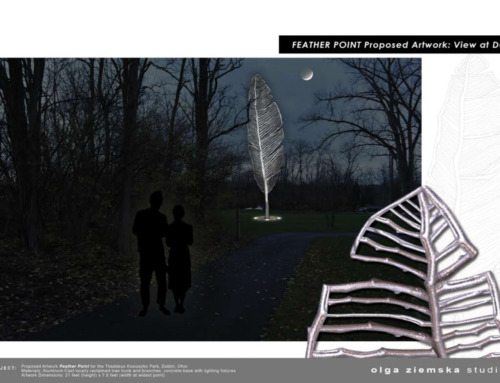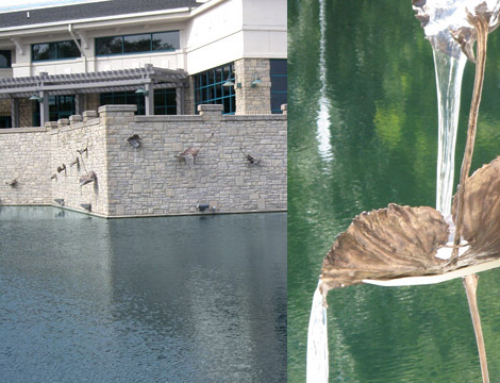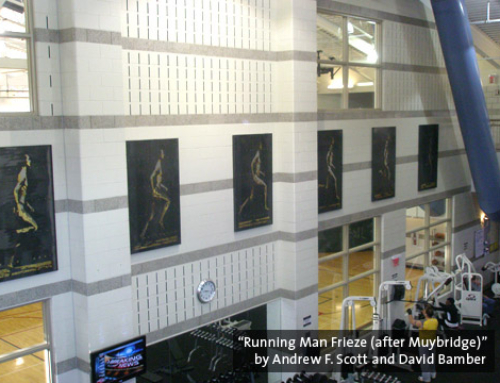artist: Todd Slaughter
location: Coffman Park
address: 5200 Emerald Parkway
Cell Tour: 614-368-6999, Stop 6
Watch House was designed and situated on its site so that it would reveal different aspects of itself slowly as the viewer moves toward the artwork. Artist Todd Slaughter intended the earthen mound and the house as a contemplative space for individuals and small groups, and as a counterpoint to the group activities of the Coffman Recreation Center located on the opposite side of the wooded, Indian Run Stream which runs between the two.
When approaching the Coffman Park Recreation Center entrance from Post Road, visitors first become aware of the twelve foot blacked-copper sphere which rises from behind the rim of the 220’ diameter circle mound.
As visitors approach the circle mound, they realize the spherical dome is perforated with cutouts and sets atop a copper-skinned house which is bridging a gap in the circle mound. The artwork’s reference to a planetarium and a house bridging a prehistoric Indian mound is intended as a celebration of the history and symbol of the future of Dublin.
As you walk up the ramp to the Watch House, you realize there is a field within the circle mound of wild sunflowers and other native plants and grasses. Entering the house, the terra cotta-colored walls and stone floor define a space offering seating, viewing, and listening opportunities in all directions. The windows on the north side provide views of the wooded stream; the windows to the south offer views of the sunflower field and bird feeders, shielded by the mound from Post Road.
Sitting inside the house on a bright day, the vistior is aware of the shaped spots of light traveling across the floor and up the walls into the spherical dome. A family dining scene of cut-out patterns in the dome and dome-mounted bronze works represent some of the most precious aspects of home and family. Central to the arrangement is a family dining scene, represented by a dining table, fruit, vegetables, plates, cups, utensils, and a bowl. A flying baby, an open book, and a curled up pet dog, are also included in these references to family, youth and play.
The near-circular pattern of holes through the floor referring to an Adena communal house remain as important parts of the overall plan of Hopewell/Adena historical references. Additional symbols include an early Indigenous Hopewell hand cutout image, located beside the door of Watch House, representing both a “hand matcher” as well as a speaking tube, acknowledging a similar fixtue built into the home of the Dublin doctor, Dr. Eli Pinney, which was a link in the underground railroad during the mid-1800s. Adults often envision their own hand relative to the stylized shape of the cut-out symbol, and many children literally match their own hand to the hand-shaped hole through the wall. The hand also serves as a greeting to those entering the house.



















